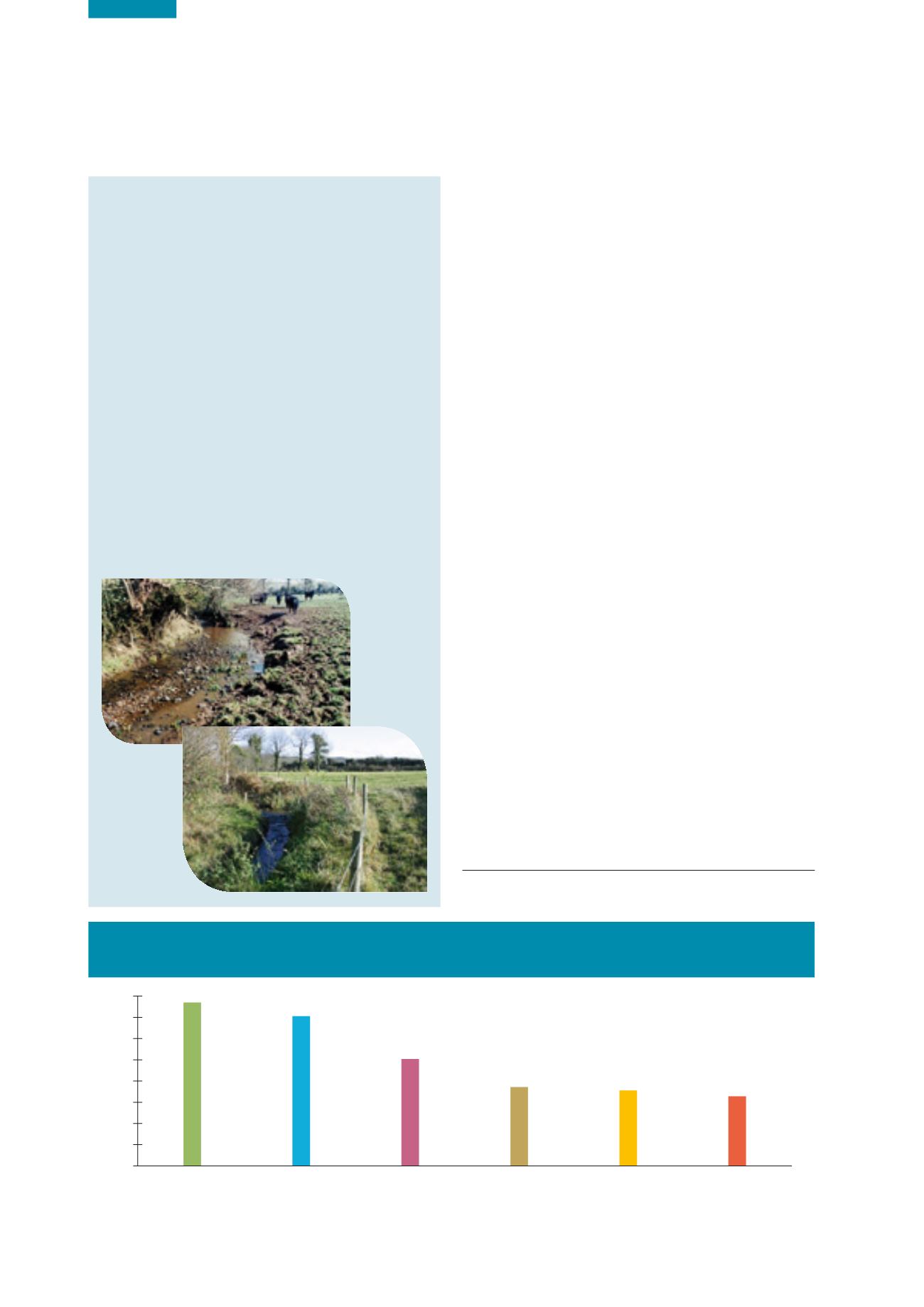

Ireland’s Environment – An Assessment 2016
78
The Agricultural Catchments Programme (ACP)
15
led by
Teagasc has been operating since 2007. Its purpose is to
provide a scientific evaluation of the effectiveness of the
EU Nitrates Directive National Action Programme measures
and underpin the basis for any modifications of the
measures that might be required to achieve water quality
objectives. It will continue to run at least until 2019.
Rural Development Programmes
Rural development programmes are an important
means to address specific water protection issues.
Three schemes or initiatives with the potential to
contribute to the protection and enhancement of water
quality are the new national agri-environmental scheme,
GLAS,
16
the new national LEADER initiative (2014‑2020)
for the protection and sustainable use of water resources
and the planned introduction of Locally Led Agri-
Environment Schemes (LLAES).
GLAS promotes agricultural actions which introduce or
continue to apply agricultural production methods that
aim to address issues including water quality (Chapter
12). Key to its design is the identification of a number of
Priority Environmental Assets (PEAs), including high-quality
watercourses. The presence of one or more of these assets
on any farm guarantees priority access to the new scheme
but, in return, all required actions to protect and enhance
these assets must be undertaken.
LEADER is a method of mobilising and delivering rural
development in local rural communities. LEADER uses a
bottom-up or community-led local development approach
to rural development. One of the LLAES under consideration
is for the protection of designated freshwater pearl mussel
populations, which are under significant threat.
15
www.teagasc.ie/agcatchments/16 Green Low Carbon Agri Environment Scheme
Figure 5.12
Reasons for Failures of Inspections of Domestic Waste Water Treatment Systems (July 2013 to
December 2014) (Source: EPA)
0
50
100
150
200
250
300
350
400
Surface
Ponding
Roof water or SW
entering the system
Leakage
from the system
Unlicensed discharge
to SW/Inadequate
subsoil thickness
Operation and
Maintenance
Desludging
164
178
186
252
353
385
Assessing the Impact of Cattle Access
to Streams
Cattle access to riparian areas and watercourses is
often considered a pressure which can increase both
nutrient and sediment input to streams (Figure 5.12).
There is increasing evidence that siltation of river
beds is a significant contributor to deterioration in
the ecology of rivers in Ireland. Fenced riparian buffer
measures to exclude cattle have been included in most
European Agri-Environmental Schemes, including the
Green Low-Carbon Agri-Environment Scheme (GLAS)
in Ireland (see below). However, although riparian
mitigation measures (including fencing) are commonly
implemented, few studies have evaluated their
effectiveness. The EPA has commissioned the research
project Cosaint
to investigate the issue. The aim of
this project is to assess the environmental, ecological
and socio-economic impact of existing and potential
measures that prevent cattle access to watercourses.


















